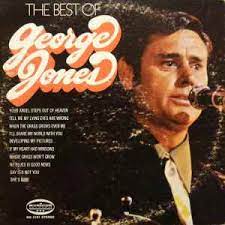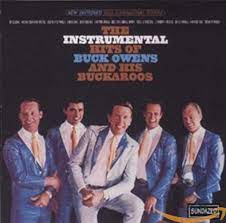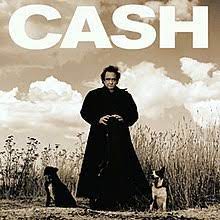Tutorial Pricing: $3.25ea OR any 10 for $10
(use code "Any10410" at checkout)
Paid Requests for $25ea
(comes with any 8 freebies -> so 9 for $25)
100's Of Free Demos & Chord Sheets
Famous Older Country Singers Songs
On The Acoustic
Welcome to my famous older country singers page where you'll find info and lessons covering several well known old time country artists.
Help yourself to the free pdf chord sheets, view some full demos and sample demos. If you require full tutorial lessons for these songs below, there is a purchase link for a small fee. Deeper discounts available from the top of this page.

Bill Anderson --- Billy Joe Shaver
Charley Pride --- Charlie Rich
Freddie Hart --- Jimmy Dean
Johnny Horton --- Johnny Lee
Ray Price --- Roger Miller
Tennessee Ernie Ford --- Tom T Hall
Vern Gosdin
Famous Older Country Singers
Chords, Lyrics, Demos, Tutorials
Bill Anderson Songs
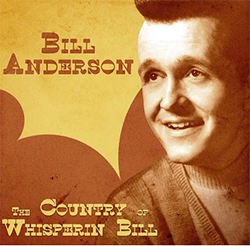
That's What It's Like To Be Lonesome is a country song by Bill Anderson from 1958. It was his first big hit, reaching number 12 on the country music charts. The song was recorded in Nashville and produced by Owen Bradley.
Ray Price also released a version of the song that same year. Anderson's single was put out by Decca Records but wasn't part of an album at first. It stayed on the charts for 17 weeks, helping to launch Anderson's career as a country music artist.
I play this one with a capo on the 3rd fret with drop D tuning so I can add a walking bass line to the chorus, but the walking bass and drop D is not necessary. A short picking riff in the middle while you play a root down up root up down up rhythm pattern with the chords D, G, A A and an E.
Chords & Lyrics
Jump To Top
Billy Joe Shaver Songs
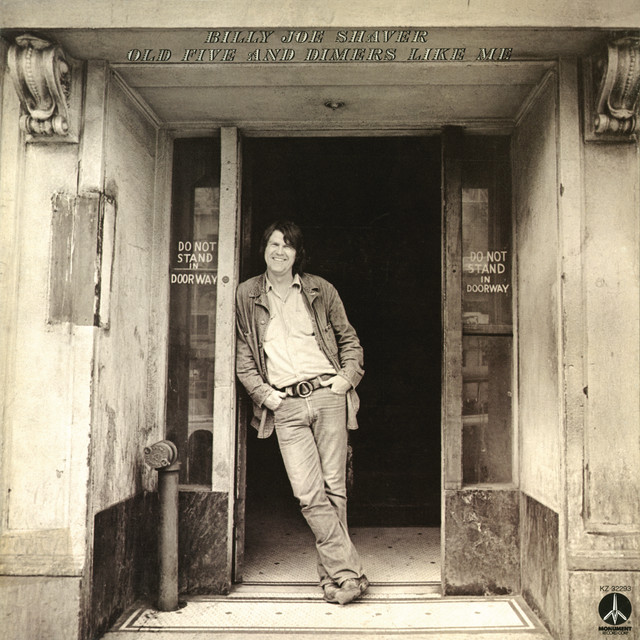
Black Rose is one of Billy Joe Shaver's standout tracks, featured on his 1973 album "Old Five and Dimers Like Me." The song was penned by Shaver himself and is an evocative and heartfelt country ballad.
While "Black Rose" did not chart when released as a single, its impact on country fan of Billy Joe Shave is undeniable. It struck a chord with his base who appreciated Shaver's genuine and unvarnished storytelling.
Over the years, "Black Rose" has been covered by various artists, showcasing its enduring appeal and influence. Notable artists like Waylon Jennings and Johnny Cash have lent their voices to the song, further cementing its status as a country classic.
I play this one in standard tuning with a down up down up down up and repeat rhythm pattern. No lead but a few riffs with the chords A, D and E.
Chords & Lyrics
Jump To Top

Bottom Dollar is a live track by Billy Joe Shaver, featured on his album "Billy Joe Shaver Live From Austin Texas." As a live recording, this song captures the essence of Shaver's performance in an intimate setting. However, I don't have specific information about the song's chart positions or cover versions in my existing database.
"Bottom Dollar" is a testament to Shaver's ability to connect with his audience through his music. Live recordings often bring out the raw and unfiltered emotions in a song, making them a unique and cherished part of an artist's discography.
Play this one with a root down up root up down up and repeat rhythm pattern and some lead. Play it in standard tuning with the chords G, G7, C , A7, B7 and D.
Chords & Lyrics
Jump To Top Of Famous Older Country Singers
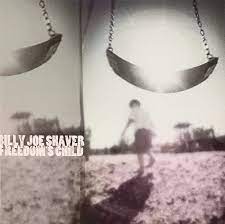
Freedom's Child is a significant track by Billy Joe Shaver, featured on his album of the same name, "Freedom's Child" in 2002. The song, written by Shaver himself, showcases his distinct songwriting style and storytelling prowess.
Shaver's signature vocal delivery, paired with his heartfelt storytelling, makes this song a compelling addition to his body of work.
Over the years, "Freedom's Child" has retained its special place in Shaver's catalog, appealing to fans who value the genuine and evocative qualities of country music.
Played with a down strokes rhythm pattern in standard tuning with just a few riffs and the three chords of D, G and A.
Jump To Top
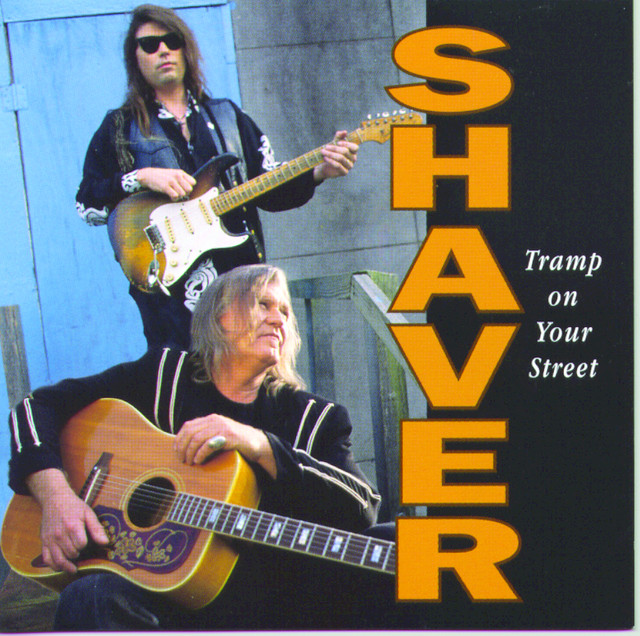
Live Forever is a poignant song by Billy Joe Shaver, featured on his 1993 album "Tramp On Your Street." As a songwriter, Shaver poured his heart and soul into this track, and it beautifully embodies his storytelling and lyrical skills.
While "Live Forever" might not have received widespread chart success, it holds a special place in Shaver's body of work, cherished for its genuine and heartfelt lyrics.
Shaver's distinctive vocal delivery, combined with the song's emotional depth, makes it a remarkable addition to his repertoire.
I play this one in standard tuning with a down down up and repeat pattern and then a root down up down up down up and repeat pattern. Play the chords G, C, D and Em.
Jump To Top Of Famous Older Country Singers
Charley Pride Songs
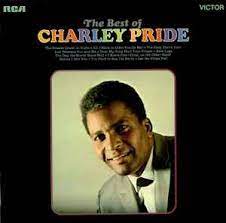
All I Have To Offer You Is Me was a single released in 1969 and peaked at #1 on the US country charts and #3 in Canada.
The song appears on the album "The Best Of Charley Pride".
This one uses Drop D tuning and a root down up root up down up rhythm pattern with a few riffs blended into the chords. This song only has three chords which are D, G and A.
Chords & Lyrics
Jump To Top
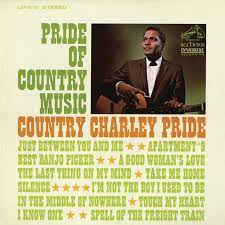
Apartment #9 was never released as a single by Charley Pride when he recorded it in 1967.
Tammy Wynette released a version and had a minor hit.
Charley kept his version on the album "Pride Of Country Music".
The chords you'll need here are C, F, G and a G7 played in standard tuning. For rhythm play a root up down up root up down up and repeat pattern with some lead work required.
Chords & Lyrics
Jump To Top
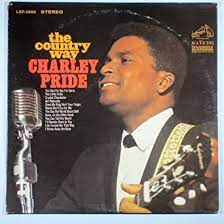
Crystal Chandelier was another surprise to to find that this song was never released as a single.
It appears on Charley Prides 1967 album "The Country Way".
I play this one in standard tuning and blend in a bit of picking while playing the chords D, A, D7, A7 and a G. For rhythm you'll need a root down up root up down up and repeat pattern.
Chords & Lyrics
Jump To Top
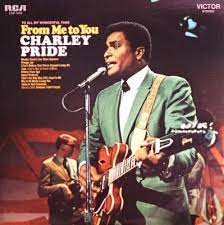
Fifteen Years Ago was recorded by Charley Pride but never released as a single. Conway Twitty had recorded the song in 1970 and had a #1 hit with his version.
Charley Pride released two singles from his 1971 album "From Me To You", but this song was not one of them.
Play a root down up root up down up and repeat rhythm pattern with the chords C, G7, G and F while in standard tuning. There is a little bit of lead in this one.
Chords & Lyrics
Jump To Top Of Famous Older Country Singers
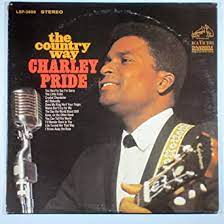
Kiss An Angel Good Morning was a track on the album "Charley Pride Sings Heart Songs" which was released in 1971. This was not the only single from that album but is was a huge song.
It reach #1 in both Canada and the US and was his only song to cross over onto the Pop charts and reaching #23. George Jones, Conway Twitty and Alan Jackson have all covered this number.
This one only has three chords which are E, A and B7 played in standard tuning. I play a root up down up bass up down up and repeat rhythm pattern with a few riffs blended in and no lead.
Chords & Lyrics
Jump To Top
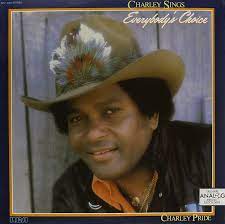
Mountain Of Love was another huge song for Charley Pride hitting the top of the charts at #1 in the US and Canada.
The song hails from the album "Charley Sings Everybody's Choice".
This one works well with Drop D tuning and a capo on the 1st fret. The rhythm here is mainly down strokes with a rock n roll kind of vibe with the chords D, A, G, Gbm, A7sus and A7. Lead work is required for this song.
Chords & Lyrics
Jump To Top Of Famous Older Country Singers
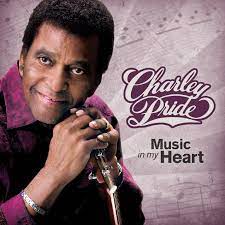
Standing In My Way is a track from Charley Pride's 2017 album Music In My Heart.
I don't know about you but I find it odd that they would build a music video around this song, but not release it as a single.
I guess the benefits of getting a video play on video channels to promote the album is greater then trying to get airplay on country radio stations for an artist at the time who was in his late 70's. Maybe that's it.
Play this one with drop D tuning and use a down down up down up down up and repeat rhythm pattern. A bit of lead in this one as you play the chords D, G and A7.
Chords & Lyrics
Jump To Top
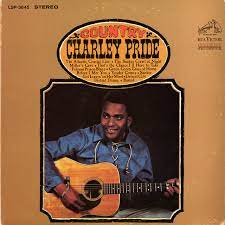
The Snakes Crawl At Night was one of the very first singles released by Charley Pride back in 1966. Here is the surprise. The song never charted .
The track can be found on the album "Country Charley Pride".
I play this one in standard tuning with an E and B7 chord and a few riffs blended into the rhythm. Play with a root down up root up down up repeat rhythm pattern.
Chords & Lyrics
Jump To Top Of Famous Older Country Singers
Charlie Rich Songs
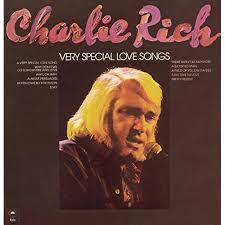
A Very Special Love Song is a romantic country tune written by Billy Sherrill and Norro Wilson. Charlie Rich recorded it in 1974, and it became one of his biggest hits, reaching number 1 on the country music charts.
It was so good that Rich was nominated for a Grammy award for his performance. Other famous country singers have also recorded this song over the years.
"A Very Special Love Song" helped make Charlie Rich even more famous in country music, and many people still love listening to it today.
I play this one in standard tuning with a few riffs in the rhythm which is a root up down up root up down up and repeat. For chords you'll need a C, Caug, D7, Dm7, G, Em, Am, F, D#, A#, Gm and G7.
Jump To Top

Behind Closed Doors is another famous country song recorded by Charlie Rich in 1973. Kenny O'Dell wrote the song, and Billy Sherrill produced it. It became a huge hit, reaching number 1 on both country and pop music charts in the US and other countries.
The song is about the private moments between two people in love, suggesting that what happens in private should stay private. Rich's smooth singing made the song very popular.
"Behind Closed Doors" won Charlie Rich a Grammy Award in 1974. Many other singers have performed this song since then.
It helped make Charlie Rich one of the biggest names in country music at the time. Today, many people still consider it one of the best country songs ever made.
Played with a root down up root up down up repeat rhythm pattern and blend in a few riffs for picking. Use the chords C, F, G, Dm and Em in standard tuning.
Jump To Top
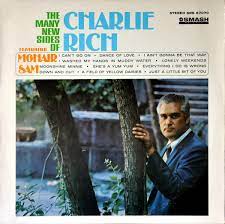
Mohair Sam is a lively song written by Dallas Frazier and first recorded by Charlie Rich in 1965. It became popular, reaching high spots on both pop and country music charts.
The song is about a stylish man named Mohair Sam who wears fancy clothes, drives a nice car, and is liked by many women.
Other famous singers have also performed "Mohair Sam" over the years. The song was part of Rich's album "The Many New Sides of Charlie Rich" and people still enjoy its upbeat sound today.
This one works well with a Drop D tuning arrangement and a down down up down up down up and repeat rhythm pattern. Some lead in this one with the chords D, D7, G, A7 and E7.
Jump To Top
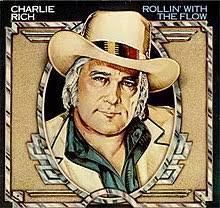
Rollin' with the Flow is a country song written by Jerry Hayes and recorded by Charlie Rich in 1976. It became a big hit, reaching number 1 on the country music charts and doing well on pop charts too.
The song has a positive message about keeping a good attitude and moving forward in life, even when things get tough. It has a lively tune with a catchy guitar part that people remember.
Rich's powerful singing made his version of the song really popular. Over the years, other country singers have performed "Rollin' with the Flow," showing that people still enjoy this upbeat classic country song.
I use a Drop D tuning for this one and a capo on the 3rd fret. Some picking required as you play though the chords D, D7, G, A7, E and E7. Use a root up down up bass up down up pattern here.
Jump To Top Of Famous Older Country Singers
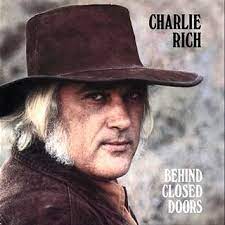
The Most Beautiful Girl is a romantic song written by Bill Sherrill, Norris Wilson, and Rory Bourke.
Charlie Rich recorded it in 1973, and it quickly became a huge hit. The song reached number one on both country and pop charts in the US and was popular in the UK too.
Over the years, many other singers have performed "The Most Beautiful Girl," showing how much people still enjoy this classic love song.
I play this one in standard tuning with a root down up root up down up and repeat rhythm pattern with a few riffs blended into the strumming. The chords here are G, C, Dm, G7, E, A7, D, Cm, Gm, Gm/Gb, Gm/F, Gm/E and a D7.
Chords & Lyrics
Jump To Top
Freddie Hart Songs
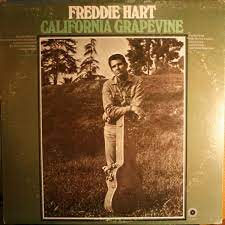
Easy Loving was a breakthrough #1 hit for Freddie Hart whose music career in country was a bit under-whelming. That's to an Atlanta DJ who played this song alot, in Sept 1971 Hart had his first #1.
The song can be found on his "California Grapevine" album.
I play this one in standard tuning with a root down up root up down up and repeat rhythm pattern. You'll do a bit of picking in this one playing the chords G, G7, C, A7, D and D7.
Jump To Top Of Famous Older Country Singers
Jimmy Dean Songs
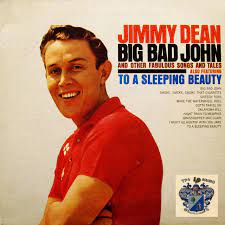
Big Bad John was a single for Jimmy Dean back in 1961 from his album Big Bad John And Other Fabulous Songs And Tales.
The song was a #1 in the US and a #2 hit in the UK. The song did not chart in Canada for some reason.
This one has a down down up down up down rhythm pattern that repeats using the chords G, F, Em, C and D in standard tuning. The song does a 1/2 step move to add the chords G#, Gb, Fm, C# and D#. There is no lead in this song.
Jump To Top
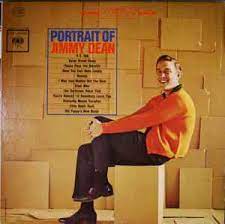
Walk On Boy was actually a B-side to the single PT-109, which went to #1 for Jimmy Dean in 1962.
Sources indicate this song is from the 1962 album Portrait Of Jimmy Dean, but there is no ref on the album jacket that Walk On Boy was on this album.
This one starts in Dbm, Ab7 and Gm and then moves up one fret to a Dm, A7 and a Gm. You'll play a root down root up down up rhythm pattern in standard tuning and no lead for this song.
Jump To Top Of Famous Older Country Singers
Johnny Horton Songs
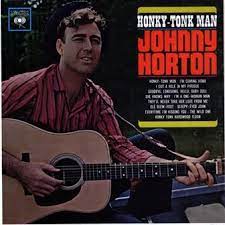
One Woman Man or as it's officially called I'm A One Woman Man, is from Johnny Horton's 1956 album Honky Tonk Man.
The song peaked at #7 on the US country charts. George Jones and Randy Travis both covered this song as did Josh Turner and Glen Campbell.
Played with Drop D Tuning and a capo on the 2nd, you'll pick a bit in this tune while playing a down up down up with walking bass rhythm pattern. The chords you'll need is a G, C and D.
Jump To Top
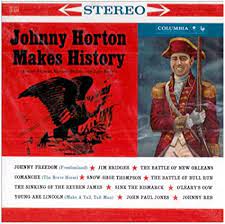
Sink The Bismarck was a #6 hit on the US country charts in 1960 for Johnny Horton and hails from the album Johnny Horton Makes History.
Horton was killed in a car accident that same year and died at the age of 35. Johnny Cash did a reading at his funeral.
This one has down down up down quick shuffle pattern to start. The it turns into a root down bass down and repeat rhythm pattern with some bass runs. Played in Drop D Tuning with the chords D, G and A.
Jump To Top
Johnny Lee Songs
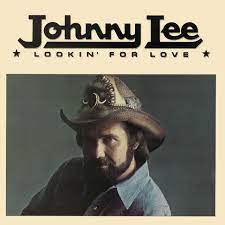
Looking For Love was Johnny Lee's first #1 hit back in 1980.
The song is from the album of the same name and was also featured in the movie Urban Cowboy starring John Travolta.
For this song you'll need a root down up root up down up rhythm pattern with a few down strokes in places with the chords Em, Gbm, G, A, Gmaj7 and D. There are a few riffs in here but no lead all played in standard tuning.
Jump To Top
Ray Price Songs
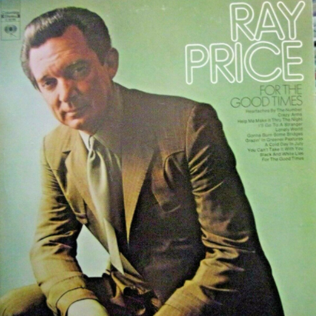
For The Good Times was an album released by Ray Price in 1970 which contained the single of the same name. The song was written by Kris Kristofferson and was his first #1 hit song as a writer.
The album for Ray Price was the best of his career with five singles in the top and 2nd spots on the country charts.
This one I play with a capo 1st fret with the chords D, G, Em, A, A7, Am7, Gm, A/A#. Use a root down up root up down up rhythm pattern with no lead work in standard tuning. Adjust the capo or don't use one depending on your vocal range. My Willie Nelson version does have lead however.
Jump To Top Of Famous Older Country Singers
Roger Miller Songs
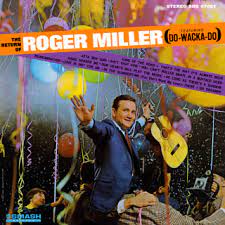
Ain't That Fine is a track on Roger Miller's 1965 album "The Return of Roger Miller." The song was written by Roger Miller himself and was released as a single the same year.
The song was not as successful as some of Miller's other hits, but it still managed to chart on the Billboard Hot 100, peaking at #67. Despite its relatively modest success, "Ain't That Fine" remains a beloved track among fans of Roger Miller's music and is often included on compilations of his work.
A capo 2nd fret puts you in the original key here in standard tuning. You'll want to play a root up down up pattern and repeat rhythm pattern. There is no picking in this one using the chords G, C and D.
Jump To Top
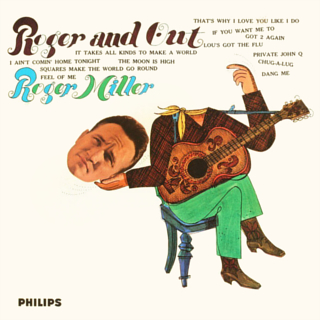
Dang Me is a song by American country music artist Roger Miller. It won the Grammy Award for Best Country & Western Song in 1964. It was Miller's first number one country hit and first Top Ten pop music hit. The song's "jazzy instrumental section" made it a perfect example of Miller's lighthearted humor, which led to many more hits.
In 1998, Roger Miller's 1964 version of "Dang Me" was inducted into the Grammy Hall of Fame.
This one has three chords, which are E, A and B7 with a root down root up down up rhythm pattern in standard tuning. One small riff which you'll sing along with as you play it.
Jump To Top Of Famous Older Country Singers
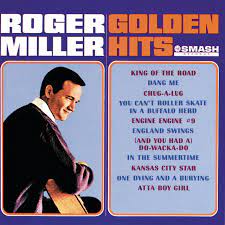
England Swings is a song written and recorded by Roger Miller in 1965. The song was a crossover hit for Miller, reaching #8 on the Billboard Hot 100 and #3 on the country charts. It also became a hit in the United Kingdom, where it reached #13 on the UK Singles Chart.
In addition to its success on the charts, "England Swings" also earned critical acclaim and is regarded as one of Miller's signature songs. It has been covered by numerous artists over the years, including the likes of Tom Jones, Waylon Jennings, and Dwight Yoakam.
Overall, "England Swings" is a lively and fun song that captures the excitement and enthusiasm of the 1960s music scene, and remains a beloved classic today.
This one has some lead with the chords A, A7, D and a G with Drop D tuning. I play a root down root up down up rhythm pattern in this one.
Jump To Top
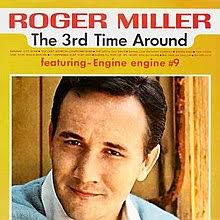
Kansas City Star is included in Roger Miller's 1965 album titled "The 3rd Time Around." The song was released as a single and it did chart. Specifically, it reached No. 7 on the Billboard Hot Country Singles chart and No. 31 on the Billboard Hot 100 chart. This success contributed to Roger Miller's prominence as a leading figure in country music during the 1960s.
The chords here start in A, G, F and then finally we get to the four main chords which are E, A, E7 and B7. You'll play a root down root up down up rhythm pattern in standard and some picking is required.
Jump To Top Of Famous Older Country Singers
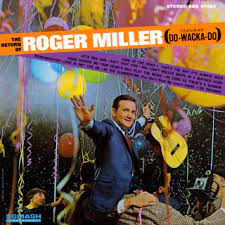
King of the Road is a song written and recorded by Roger Miller in 1964. It became one of his biggest hits and is considered a classic country song.
The song's catchy tune, upbeat tempo, and Miller's unique singing style made it a huge success. It reached #4 on the Billboard Hot 100 and #1 on the country charts. Miller won several awards for the song, including a Grammy for Best Country & Western Recording.
"King of the Road" has been covered by many artists, such as Randy Travis, Dean Martin, and the Proclaimers. It has appeared in many films, TV shows, and commercials, making it a beloved cultural icon.
Only three chord here using a G, C and D in standard tuning with a root up down up root up down up rhythm pattern. The songs does move up one fret but not in my version here. Instead I have a bit of lead guitar in this lesson.
Jump To Top
Tennessee Ernie Ford Songs
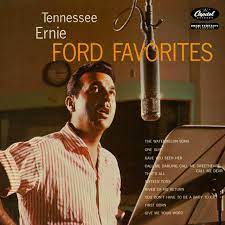
Sixteen Tons became a #1 hit in the US in 1955. The song was written by Merle Travis and released by Travis in 1947. But Tennessee Ernie Fords version in 1955 has become the best known version.
The track is from his album Ford Favourites.
A capo on the 2nd fret is the original key for this one in standard tuning but there is no lead guitar required. Use a root down root up down up rhythm with the chords Am, E, F, G, E7 and Dm.
Chords & Lyrics
Jump To Top
Tom T Hall Songs
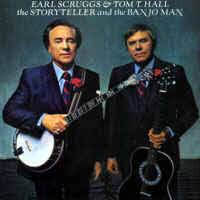
Engineers Don't Wave From Trains Anymore is from the 1982 album "The Storyteller And The Banjo Man".
The song was never released as a single.
I play this one in standard tuning with a root down root up down up and repeat rhythm pattern and some lead. The chords here are C, G, F, C7, F, C and an Am.
Jump To Top
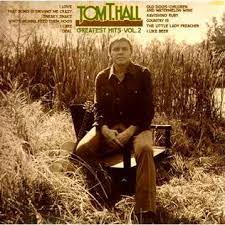
I Like Beer was a single released in 1975 and peaked at #4 in the US and #12 in Canada.
The song can be found on the album "Faster Horses".
I play a root down down root down down rhythm pattern for this one with no lead. The chords you'll need are Gb, B7, E, A, Am, C#7.
Jump To Top Of Famous Older Country Singers
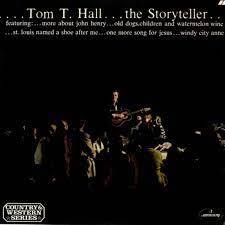
Old Dogs, Children And Watermelon Wine was released from "The Storyteller" album was a #1 hit in both Canada and the US. The song was written by Tom T Hall about an encounter with an old janitor
he meet in Miami while attending a political event. Frankie lane, Ferlin Husky and John Prine have all covered this song.
I play a capo 3rd fret with some lead and the chords G, D, A7, D7, Em, E7, E, A and a Gbm. Play in standard tuning with a root down root up down up and repeat rhythm pattern.
Jump To Top
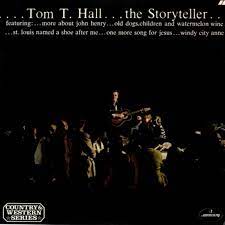
Pamela Brown was released as a single in 1972 but failed to chart in the US but did chart in Australia at #24.
The song is from his album "The Storyteller".
This one I play with drop D tuning with some lead and a root down root up down up and repeat rhythm pattern. For chords you'll need a D, G, A7, Gb, Bm and a D7.
Jump To Top
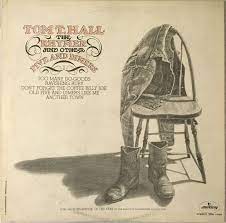
Ravishing Ruby was released as a single back in 1973 from the album Rhymer And Other Five And Dimers.
The song reached #1 in Canada and hit #3 in the US. It also charted in Australia at #80.
Chords & Lyrics Available Soon
Jump To Top
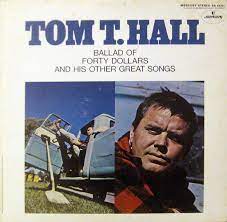
That's How I Got To Memphis was not released as a single back in 1969 by Tom T Hall but was recorded and released by Bobby Bare in 1970. His version peaked at #3.
Tom T Hall had this track on his "Ballad Of Forty Dollars & His Other Great Songs".
In this number the is no lead and played in standard tuning with a root down up root up down up and repeat rhythm pattern. For chords play a E, A, Dbm, Gbm and a B7.
Jump To Top Of Famous Older Country Singers
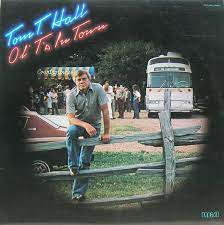
The Last Country Song was never released as a single but can be found on his 1979 album "Old T's In Town".
Only three chords here with a C, F and G and a root down bass up down up and repeat rhythm pattern in standard tuning and some lead required.
Jump To Top
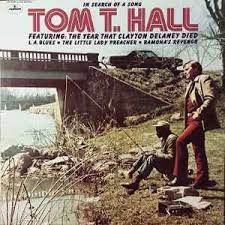
The Year That Clayton Delaney Died was a #1 hit in the US for Tom T Hall in 1971 and is based on his neighbor and boyhood hero Lonnie Easterly.
The song hails from the album "In Search Of A Song".
No lead here with the three chords of C, G7 and C7 in standard tuning while playing a root down up root up down up and repeat rhythm pattern.
Jump To Top
Vern Gosdin Songs
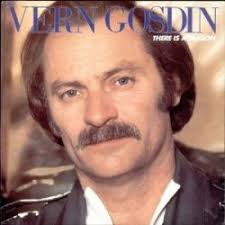
I Can Tell By The Way You Dance was released by Vern Gosdin in 1984 as the lead off single from his album There Is A Season. Vern initially thought the song was too rock and roll-ish for him so he waited two years before he decided to give it a go.
The song went to #1 on the US Country Charts. Gary Morris recorded the song two years earlier but did not have the same success with his release.
The rhythm pattern here is a steady shuffle augmented with some quick bass notes. You'll use the chords D, G, A, Bm and a C in standard tuning. Some lead work required.
Jump To Top
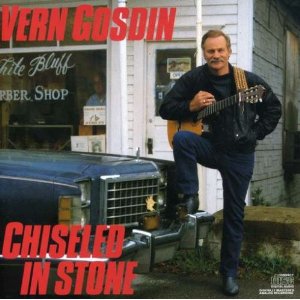
Is It Raining At Your House was first released in 1987 from Vern's album Chisled In Store. It also appreaed on his 10 Years Of Greatest Hits in 1990.
The song was co-written with Dean Dillon and Hank Cochran and made it to #10 in the US and #8 in Canada.
In this song you'll play a bit or arpeggio (notes) mixed with rhythm. What I do is a 1-2 down up for the most part while playing the chords D, A/Db, A, G, Gm, Bm and a Gb. There is some lead in standard tuning.
Jump To Top Of Famous Older Country Singers
Common Questions About Famous Older Country Singers
1. Who is the most famous country singer?

This one would be tough to answer but a few contenders certainly would be Patsy Cline, George Jones, Johnny Cash, Merle Haggard, Willie Nelson, Dolly Parton, Waylon Jennings and Loretta Lynn. All of these artists music and lessons are available here on my site under the country section.
2. Who is the oldest famous country singer?

I believe in today's environment of 2024, the winner there is a hands down Willie Nelson.
There are artists who are older than Willie including Violet Hensley (106), Merv Shiver (102), Leroy Van Dyke (92), Buck White (92) and Bill Clifton also 92.
But when you add the word famous to the equation, I'd have to go with Willie for the win.
3. Who was the most popular country artist between 1960 and 1970?

That title would have to go to Loretta Lynn who during the 1960s and
early 1970s was the most well known and well liked artists during that
period and influenced most of today's hottest female country stars.
4. Who were the male country singers in the 2000s?

Of course many of the older country guys were still performing in the 2000s but the top chart toppers were artists like Kenny Chesney, Keith Urban, Brad Paisley and Tim McGraw.
You still had performers out there like Toby Keith, Mark Chesnutt, Tracy Byrd and Tracy Lawrence and don't forget Garth Brooks but he was retired from 2001 until 2005 and Chesney stepped up to the plate and has really never looked back since.
Of course many of the older country guys were still performing in the 2000s but the top chart toppers were artists like Kenny Chesney, Keith Urban, Brad Paisley and Tim McGraw.
Thanks for stopping by this famous older country singers songs page and I hope the info here was helpful.
If you liked this famous older country singers page you might also like ... (click images)
Homepage
Very Easy Country Guitar Songs
